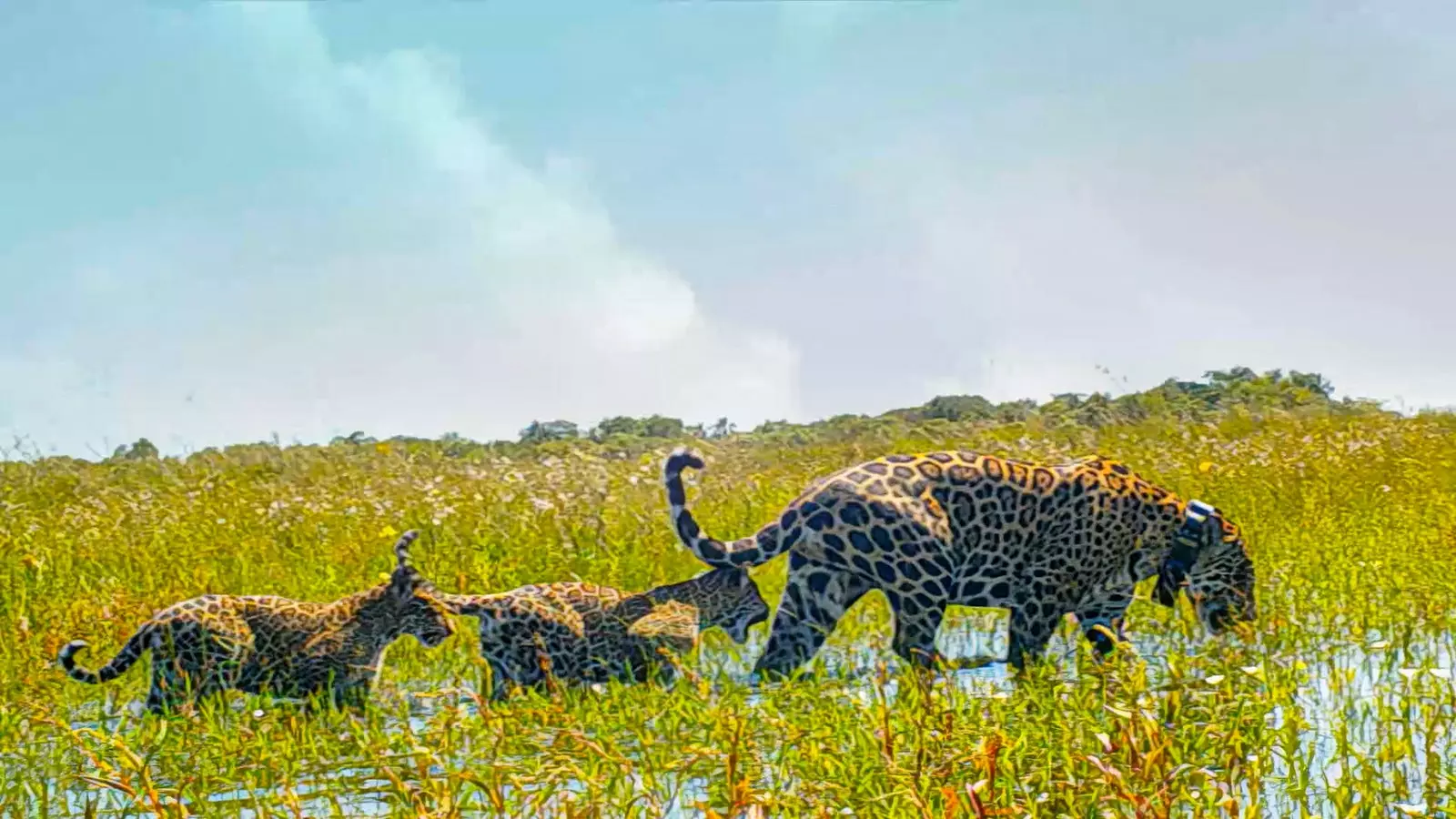
Mariua and her cubs before leaving the Yaguareté Reintroduction Center, in the Iberá National Park (Argentina).
The yaguareté, as the jaguar is called in Guaraní, is the most threatened predator in South America. Historically, its habitat extended throughout the American continent, from the forests of the northwestern United States to the grasslands of Patagonia. Today, however, the species is considered extinct in Uruguay and El Salvador, in the US only the occasional solitary male survives and in Argentina it has disappeared from 95% of the places where it used to live. It is estimated that only around 200 individuals remain in this country, isolated from each other as a result of the fragmentation of the biological corridors through which they traveled.
In the northern state of Corrientes, where stars in legends, popular songs and tourist posters, he had not been seen in seven decades. But here, on an island in the wetlands of the Iberá National Park, the Jaguar Reintroduction Center (CRY) of Rewilding Argentina, one of the Tompkins Conservation foundations, has been working for six years to return this big cat to its domain. legitimate. **
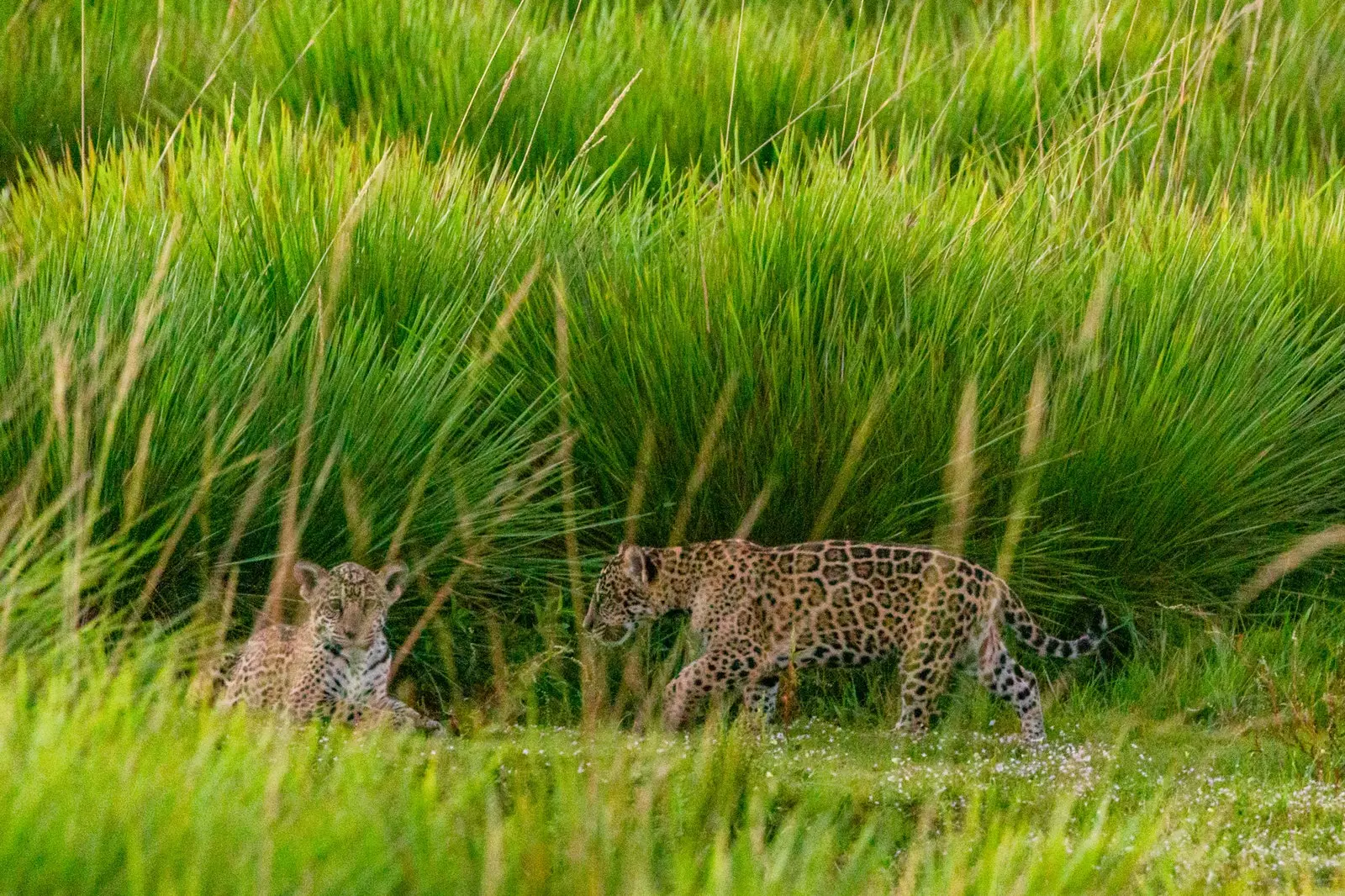
Karaí and Porá, the two jaguar cubs released in the Iberá National Park.
The puppies in the photo are called Karaí and Porá and they were born last September on the island of San Alonso, in a 30-hectare 'corral' designed by the CRY to please the most demanding jaguar. Although they do not know it, since the entire project is being developed without them having any contact with humans, They have been free since January 7, making history, roaming freely through the jungles and wetlands of Iberá Park.
They are accompanied by their mother Mariua, who, as you can also see in the image, wears around his neck a GPS collar that informs the CRY of their movements. In fact, if you want, you can also follow their steps and evolution here.
The collar collects GPS points every three hours and, Every day, at 5:00 in the morning, they are sent via satellite to the center's computers. When there are many points together, it means that he spent several hours in one place, either sleeping or eating something he hunted.
“Mariua is hunting a prey every two days. They are generally capybaras (capybaras) and wild pigs. She has to hunt a lot because she has two big puppies, almost six months old”, she tells us. Sebastián Di Martino, Conservation Director of Rewilding Argentina, in telephone conversation. He seems very happy. "Everything is going even better than planned."
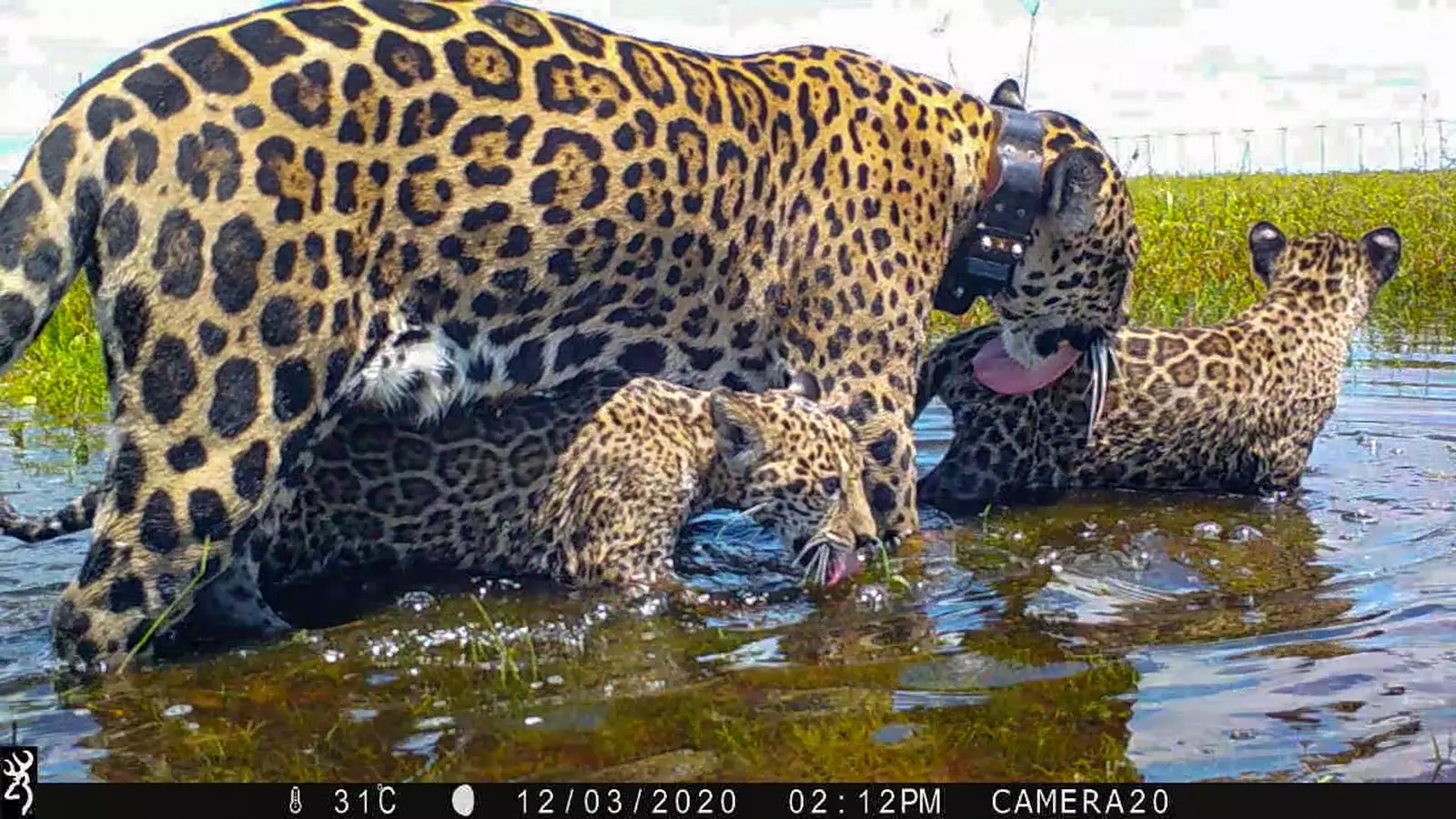
Mariua, Karaí and Porá, the family of jaguars that are making history
For a couple of weeks, Mariua and the little ones are now about four kilometers south of the place of release. "At first they settled very close to the corral, just 700 meters away, and they stayed there for quite a few days, very comfortable as we could see through the camera traps. But now that Karaí and Porá are older and willing to walk for a longer time, they are moving more and they have gone to explore something further”, Sebastián informs us.
Mariua's family will soon be joined by her sister Juruna's, that she will be released when her pups grow a little older.
Mariua and her sister Juruna arrived at the San Alonso Island Jaguar Reintroduction Center two years ago after poachers killed her mother in the Brazilian jungle. “Although they have been here for two years and Iberá, its landscape, its sounds and its smells are already their home, we want to prevent them from starting to walk like crazy and end up disoriented”, Sebastian explains to us about the strategy behind the release. “At four months of age, the cubs are big enough to follow their mother, but not so big that they stray too far. This forces the females to go slowly, to take their time to familiarize themselves and get their bearings, which is exactly what we want.”
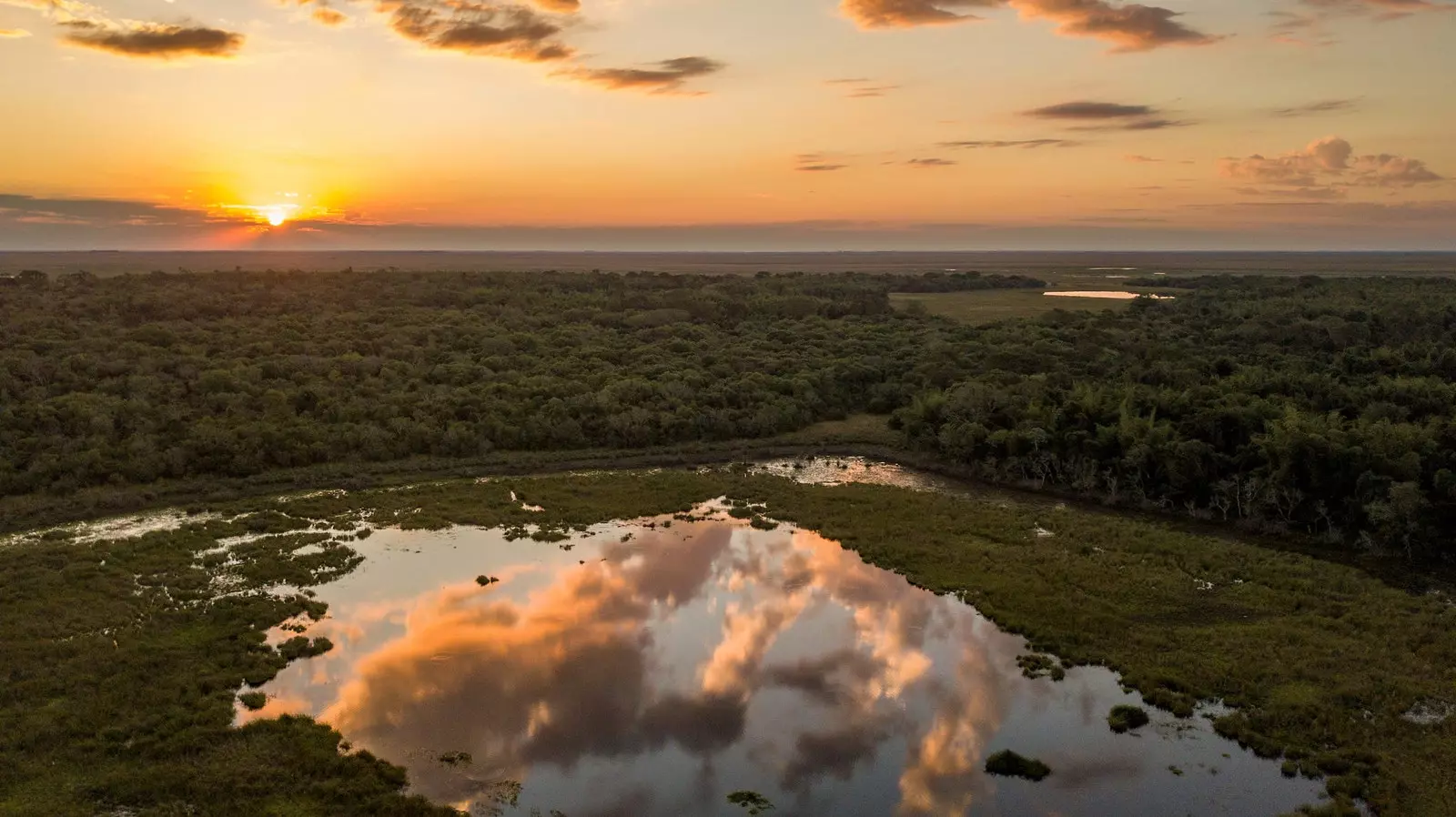
View of the Iberá National Park, in the province of Corrientes, Argentina
Before the end of the year It will be the turn of Aramí and Mbareté, who will be three years old in June and have the honor of having been the first jaguars to be born in the CRY. It is expected that they will also do so with their young.
“The idea is to first release several females with their young and, when they have well established their territory, release the male”, Sebastian explains. Females define their territory according to the availability of prey. The males, in addition, according to the available females.
The male, who is Karaí's father, Porá, and his cousins are called Jatobazinho. He is also Brazilian, from the southern Pantanal, and wild. “Some children from the Jatoba school found him and baptized him that way. He appeared swimming across the river. He was in very poor physical condition, very weak, and when he reached the shore he hid under an overturned wooden boat, ”says Sebastián. Sent to a rescue center, he was transferred to the CRY in September 2019.
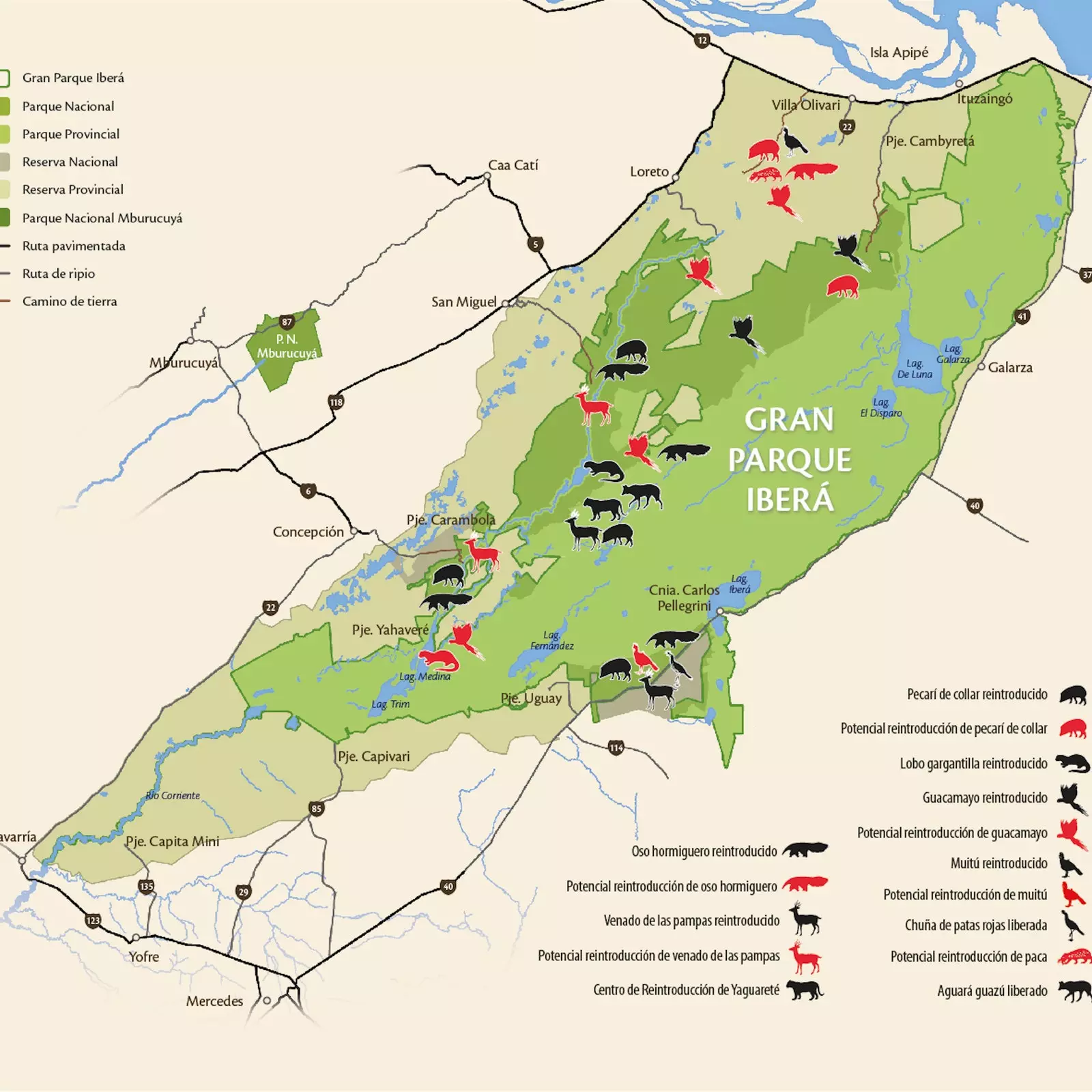
Map of the reintroduction projects of Rewilding Argentina in the Iberá Park.
But that of the jaguar is not the only project of reintroduction and regeneration of species of Rewilding Argentina in the Iberá Park. is also that of anteaters, of which there are already several generations. The pampas deer, which with 200 specimens that reproduce by themselves is already the largest population of these animals in danger of extinction. That of the muitús (Crax fasciolata), a species like a huge and precious hen that had been missing from the area for fifty years and that a couple of weeks ago had its first offspring. And that of the red macaws, which had disappeared from the region a century and a half ago. “The macaws had their first chicks last year. They are two females. They are still with their parents and they are clumsy at getting food and breaking it, but they already know how to fly”, Sebastian happily tells us. It is logical that he is very happy.
